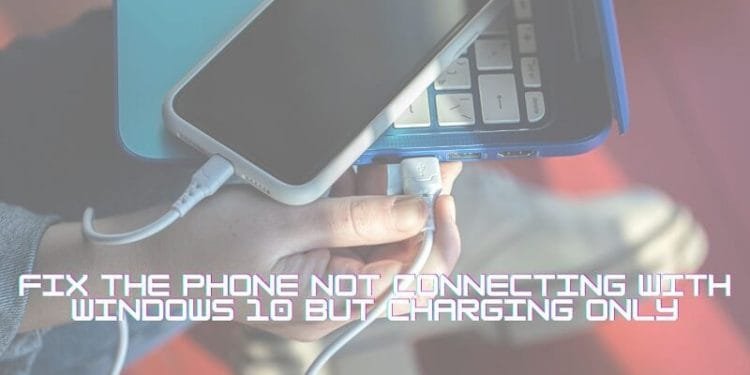Whenever a person wants to transfer data from a computer to an Android phone or vice versa, the first thing that comes to their mind is a USB cable to connect the two devices. USB cables are holy grail products to transfer huge amounts of files effortlessly. Besides being easy, they are secure as they do not lose or tamper with your files.
However, the problem of users facing issues while transferring data using USB cables is not new. When a person aspires to transfer data connecting a PC and a mobile using a USB, they often see the phone charging and not the option that allows data transfer. The cable fails to recognize the smartphone.
There may be issues with the cable. So, ensure the USB cable is working fine. Install the MTP Device Driver to be on the safer side. If the problem persists, refer to the below-given solutions. These solutions fit all Android smartphones. However, settings options can vary depending on the UI skin and Android version. With this said, let’s look at how to fix the phone not connecting with Windows 10 but charging only.
Solution 1- Allow USB Debugging on your smartphone
The first step you must take to ensure file transfers from a PC to a mobile device via a USB cable is USB Debugging. Before you can view this option, you must enable developer mode or enter it. To activate developer mode and enable USB debugging, follow the instructions listed below.
- Open your Android smartphone settings.
- Click on About Phone.
- You can discover all of your phone’s information here. To activate developer mode, tap Build Number a total of 7 times. You have entered developer mode; this message will show up.
- To access the Developer Options, go back to Settings and select Additional Settings.
- USB Debugging is a feature you may find on the Developer settings page. Turn it on.
- You’ve successfully made your smartphone’s USB Debugging feature available.
When you unplug the USB and replug it, your phone’s name should appear so that you may begin transferring data. If not, you can switch from charging solely to file data transfer by looking at the notification panel.
Solution 2- Update your driver through PC.
As said above, download and install your USB drivers to ensure they are in place. If you have already done that, check if the drivers are updated. The necessary driver needs to be updated or present when a smartphone is linked to a PC through USB. By taking a few simple steps, you can quickly solve this.
- Link your smartphone to your computer.
- Go to your desktop and choose Manage by right-clicking on This PC.
- Choose Device Manager
- You can find your phone name or Android by expanding Portable Devices in the list of possibilities that appear.
- Right-click on the name of your phone.
- “Search automatically for drivers” should be selected when you click Update Driver Software.
- Connect your phone through USB once the drivers have been updated.
Solution 3- Disconnect other USB devices from your computer
If you have linked many devices over a long time on your PC, it might not recognize your smartphone. It remembers numerous gadgets, which can be one of the causes of your file transfer issue through USB. Therefore, it might have already installed some drivers.
Solution 4- Reset the USB Ports
The USB port not working properly can also be a potential reason. Thus, resetting the ports is all that is required.
- On the Windows icon in the taskbar, click the right mouse button.
- From the list, choose Device Manager.
- Incorporate more USB Serial Controllers.
- There will be a list of USB controllers. Uninstall the device by right-clicking on the USB controllers. Then, for each PC restart, repeat these steps.
- Windows will automatically check the drivers and restore them.
Solution 5- Restart your Android Smartphone
Straightforward solutions, such as switching off the phone and starting it again. Admit it, we all restart our phones whenever we encounter problems. Similarly, if none of the above mentioned methods work, you can try this approach, which may be successful.
- Remove the USB cable from the computer and phone.
- Press the power button repeatedly until your smartphone turns off.
- Then, after a few minutes, switch it back on.
- Also, restart your computer.
- Re-connect the USB cable between your PC and phone and transfer the files.
Conclusion
Though these are the top issues that fix the phone not connecting with Windows 10 but charging only, other reasons may also cause the same issue. Therefore, it’s better to keep on learning the various ways to keep your computer and smartphone in an optimal state and eliminate the chances of such issues occurring.

















































